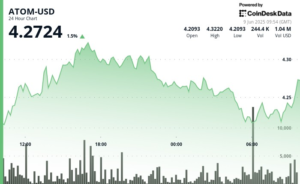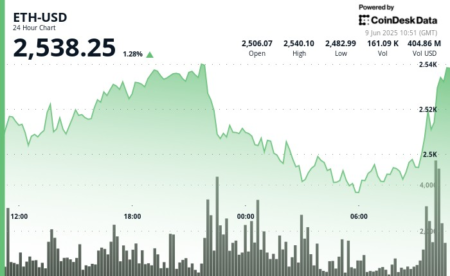Vitalik Buterin has argued that increasing Ethereum’s L1 gas capacity is necessary to support transaction inclusion and application development when most activity occurs on L2. In a new blog post, Buterin outlined calculations suggesting that a roughly 10× expansion in L1 capacity would preserve key network functions even as applications migrate to Layer 2 solutions.
The gas limit defines the maximum amount of computational work that can be performed in a single block, setting an upper bound on the transactions and operations processed. Increasing the gas limit expands the protocol’s capacity to process more computational work per block, allowing it to handle a higher volume of transactions and more complex operations while influencing fee dynamics.
Recent 20% increase in gas limit
Buterin’s analysis builds on the recent increase in the L1 gas limit from 30 million to 36 million, which raises capacity by 20%.
Buterin noted that further increases, enabled by efficiency improvements in Ethereum clients, reduced history storage from EIP-4444, and eventual adoption of stateless clients, could offer long-term benefits. His discussion frames the debate over scaling by comparing current gas needs with more ideal scenarios across several use cases.
As Buterin reported, censorship resistance remains a critical function. He demonstrated that bypass transactions—designed to overcome potential censorship on L2—could cost approximately $4.50 at current gas prices. By scaling L1 capacity by roughly 4.5×, these costs could be driven down, ensuring that valid transactions reach the blockchain promptly even under congestion. In a similar vein, cross-L2 asset movements, including transfers of high-volume assets and NFTs, currently incur costs near $14 per operation.
Buterin’s estimates suggest that with improved design and a scaling factor of about 5.5× to 6×, such transactions might be executed at a fraction of that cost, potentially as low as $0.28 in an ideal setup.
Mass exits from L2s
Buterin’s analysis extends to scenarios involving mass exits from L2. An exit refers to the operation by which users withdraw their assets from a Layer 2 solution back to Ethereum’s main chain (L1), typically to safeguard funds during network disruptions or other emergencies.
He calculated that under current parameters, an exit requiring 120,000 gas per user would allow between 7.56 million and 32.4 million users to exit over a one-week to 30-day period, depending on the roll-up design. With optimized protocols—reducing the cost per exit operation to approximately 7,500 gas—the number of users able to exit safely could increase substantially, supporting millions more and reducing the risk of liquidity or security issues during periods of network stress.
Addressing token issuance, Buterin observed that many new ERC20 tokens are launched on L2. However, tokens issued on L2 may be vulnerable if a hostile governance upgrade occurs, a risk mitigated by launching on L1. He cited examples such as the deployment of the Railgun token, where the cost was over 1.6 million gas.
Even if these costs were reduced to around 120,000 gas, the expense per issuance remains near $4.50, implying that a scaling factor up to 18× could be required for more widespread, cost-effective token launches that meet lower target fees.
The discussion also covered operations tied to keystore wallets. Buterin estimated that for widespread key updates—assuming 50,000 gas per operation—a 3.3× increase in gas capacity might be needed, though efficiency gains reducing the cost to around 7,500 gas per operation could lower this requirement to nearly 1.1×.
Similarly, frequent L2 proof submissions, necessary for maintaining up-to-date interoperability between chains, currently impose substantial costs that limit the number of viable L2s. With advanced aggregation protocols potentially lowering per-submission costs to about 10,000 gas, a scaling factor of roughly 10× would be needed to make regular L2-to-L1 updates economically viable.
Buterin’s calculations highlight that despite most activity shifting to L2, maintaining robust L1 functionality is essential to preserve censorship resistance, enable efficient asset transfers, support mass exits, safeguard token issuance, and facilitate interoperability.
As Buterin concluded, increasing L1 gas capacity offers value by ensuring that fundamental blockchain operations remain secure and accessible even as network usage patterns evolve.
His analysis frames a clear argument for near-term scaling measures that could safeguard Ethereum’s core functions regardless of the long-term balance between L1 and L2 activity.
Mentioned in this article


Read the full article here









